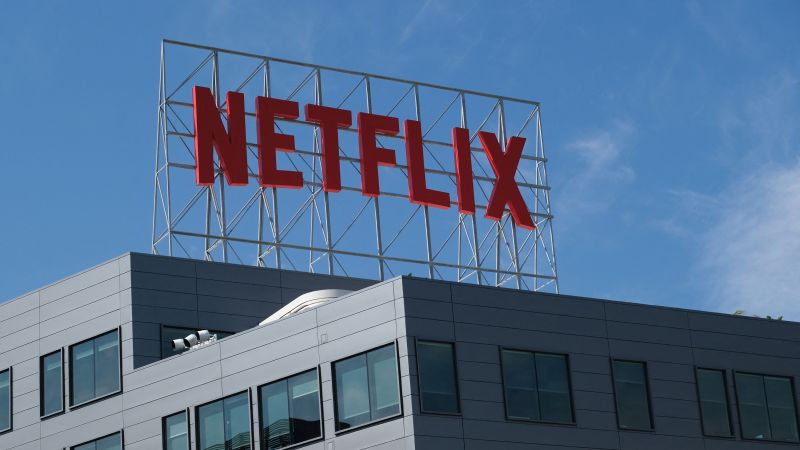Netflix has raised its prices again.
The streaming giant said in its third-quarter earnings report that its premium ad-free plan in the United States will increase by $3 per month, to $22.99, starting Wednesday. Its one-stream basic plan will rise to $11.99 in the United States. All other plans, including its entry-level, $6.99-a-month ad-supported tier, will remain at the same monthly cost.
Netflix also announced price increases for some subscription tiers in the United Kingdom and France.
The company reported a 9% year-over-year increase in average paid memberships, adding 8.8 million subscribers last quarter. That’s compared to 2.4 million in the third quarter last year. Overall, Netflix reported 247 million paid global subscribers in the third quarter.
Netflix attributed some of its strong subscriber growth to its continued password-sharing crackdown. Netflix said it has officially rolled out its “paid sharing” program in every region where the company operates, and fewer customers than they expected cancelled their memberships as a result. Rather, many customers who previously borrowed passwords from others are converting into full paying subscribers, according to Netflix.
Netflix also said that adoption of its advertising tier plans continues to grow, with membership up almost 70% compared to the previous quarter.
The company brought in $8.54 billion in revenue last quarter, boosted by higher-than-expected growth of its membership base. Earnings per share for the quarter came in at $3.73.
Netflix’s stock jumped by 12% in after-hours trading.
In a letter to shareholders, Netflix called the last six months “challenging” given this summer’s writers’ guild and actors’ guild strikes. On Netflix’s third-quarter earnings call, Ted Sarandos, the company’s co-CEO, said the company is “totally committed” to ending the actors strike after an agreement with the writers guild was reached last month.
Last week, negotiations between SAG-AFTRA, which represents Hollywood’s actors, and the studios, were suspended after the two sides disagreed about SAG-AFTRA’s latest proposal.
“The industry, our communities and the economy are all hurting,” Sarandos said Wednesday. “We need to get a deal done that respects all sides as soon as we possibly can.”
On the earnings call, co-CEOs Sarandos and Greg Peters also stressed Netflix’s investments in newer business areas, like gaming and sports content, to draw new subscribers.
“Games is a huge entertainment opportunity,” Peters said. “From a strategic perspective, we believe we can build games into a strong content category, leveraging our current films and series.”
Netflix last raised prices in January 2022, but its biggest competitors have all raised prices since then. Disney+ in August hiked prices by $3 a month – for the second time this year. The company also raised Hulu prices. And Max, owned by CNN parent company Warner Bros. Discovery, raised prices in January 2023 by $1 a month – its first-ever price hike.
Hollywood studios continue to demand more from streaming services for their TV shows and movies, as production costs rise. Meanwhile, consumer demand for streaming services has slowed dramatically since the pandemic, cutting into streamers’ revenue growth. Raising prices is one way to solve that issue.
Making streaming shows will get only more expensive after the end of the writers strike, which boosted pay and benefits for Hollywood writers. And the actors, who are still on strike, are demanding more, too.
Netflix is one of the few profitable streaming services, and investors are demanding Netflix continue to grow its earnings. That’s why the company has been pushing its lower-priced ad tier, in which it can hide some of the cost by keeping prices low for consumers but charge more to advertisers over time.
On the company’s earnings call, Peters said the company plans to eventually offer an even wider range of price points for Netflix subscriptions to grow its subscriber base.
More price offerings could allow “entertainment fans from around the world that have different needs to be able to access the great story-telling that our creative partners are doing at a price-point that works for them,” Peters said.
Read the full article here





